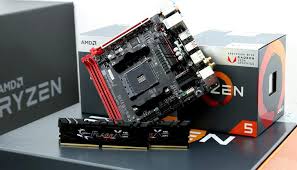A new family of chips is coming to support the famous AMD processors. The designer revives from the ashes, in a way, the flagship range of classic Athlon and takes the opportunity to bring it up to date.
Building on the success of the Ryzens and other Threadrippers, AMD has chosen this autumn to revive its Athlon family of processors. An iconic and historical range that, 20 years later, still resonates with the geek spirit of a few technophiles. These processors allowed AMD – still a foundryman at the time – to enjoy some great glory between 1999 and 2007 and to keep up with Intel and its Pentium III, IV, and D of the time.
Today, AMD is launching both the Athlon and Ryzen PRO models (which we will not discuss here) and a reference for the general public, the Athlon 200GE. Its mission is to compete with Intel’s Pentium and other Celerons, which are the blue smelter’s entry-level chips. A segment that AMD had abandoned for some time, continuing to rely on its aging families, the APU A-Series and the traditional processors, the Athlon X4.
The Athlons are shifting to APU speed.
AMD Athlon 200GE AMD – Like all first and second generation Ryzen processors, the Athlon 200GE takes place on an AM4 socket motherboard.
Of course, this Athlon is not just an x86 processor. It is indeed an APU (Accelerated Processing Unit) that AMD is launching today and which, regarding usage, should provide for all comers (multimedia, office automation, etc.). Or even a little video game, under certain conditions, based on the information provided by the designer.
In addition to its announced performance, the main advantage of this processor is undoubtedly its price: from 55 dollars. APU requires the Athlon 200GE integrates both calculation units and an integrated graphic part.
Engraved in 14 nm and designed on Zen architecture like the Ryzens, these chips integrated two cores, hyperthreaded and clocked at 3.2 GHz (no Precision Boost or XFR, Turbo AMD modes).
As for the graphic part, it is of the Vega 3 type, i.e., it integrates 3 CU blocks for the processing of 3D data of the few eSport titles that you might want to run with it. This graphic part can reach a frequency of 1 GHz (in Boost mode) and has no dedicated memory integrated.
AMD makes the match again: the Athlon would remain better than the Pentium
According to the test results provided by AMD, the games should run at 720p (1280 by 720 pixels) with more or less levels of detail. And the newcomer would perform much better than the Intel Pentium model taken as a reference, a G4560 (3.5 GHz, Intel HD 610 up to 1.05 GHz). Conversely, when you combine the new Athlon or Intel processor with a dedicated graphics card, such as a GeForce or Radeon, AMD admits that its solution does not perform as well as its competitor’s. Is it an admission of weakness? No. No. To justify this difference from the Intel solution, the designer points out that the Athlon 200GE would only consume 35 watts while the Pentium would consume 54 watts.




